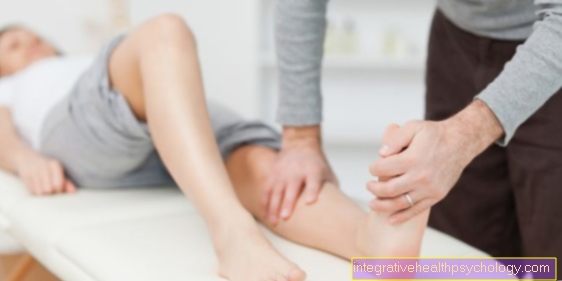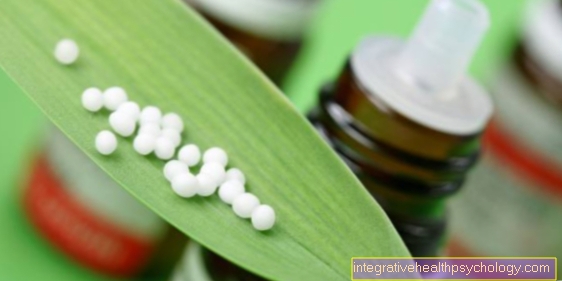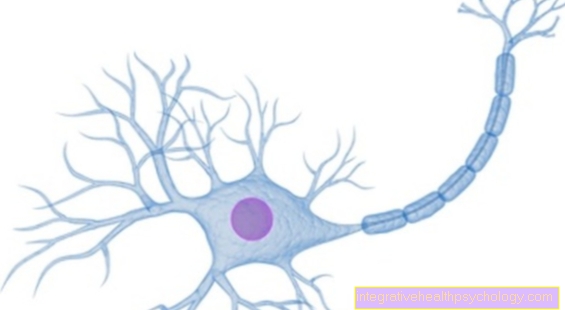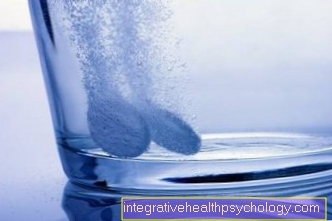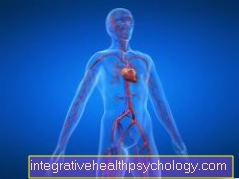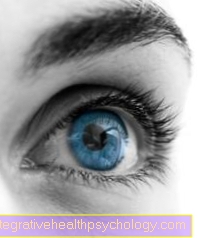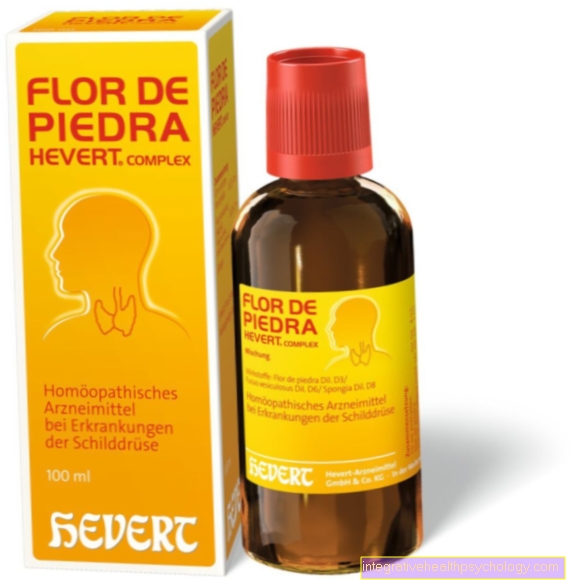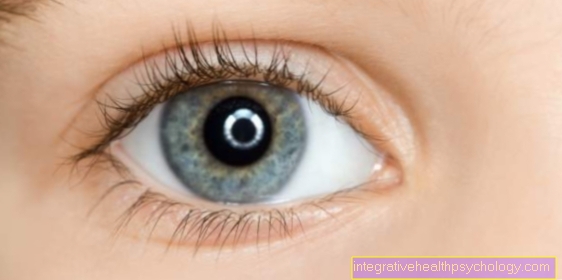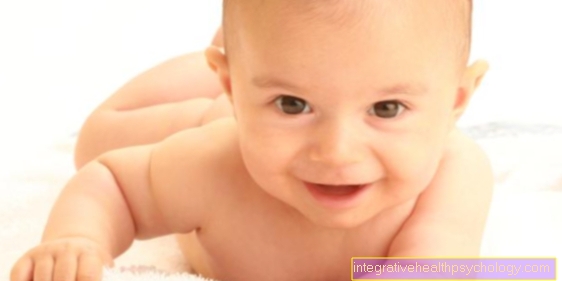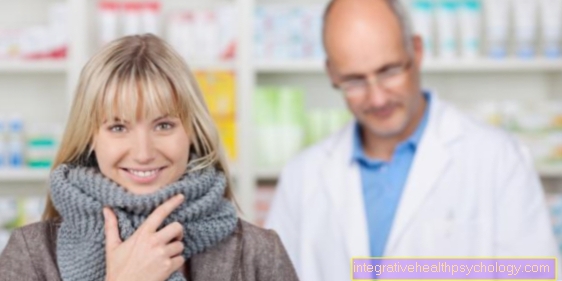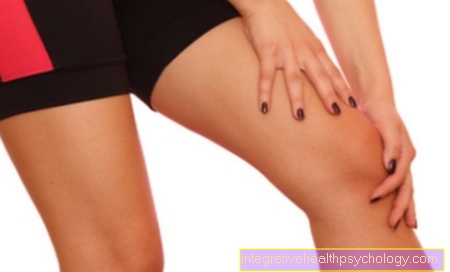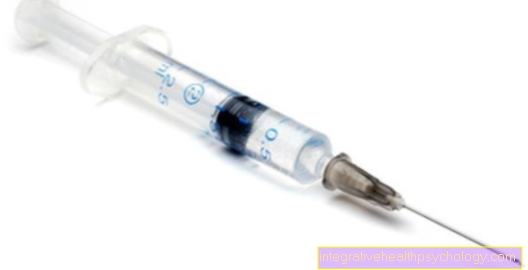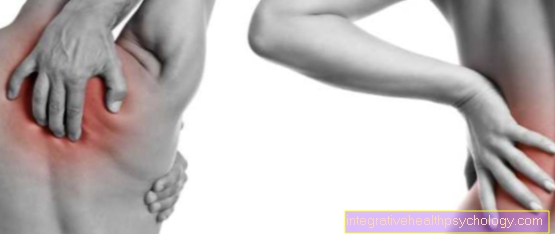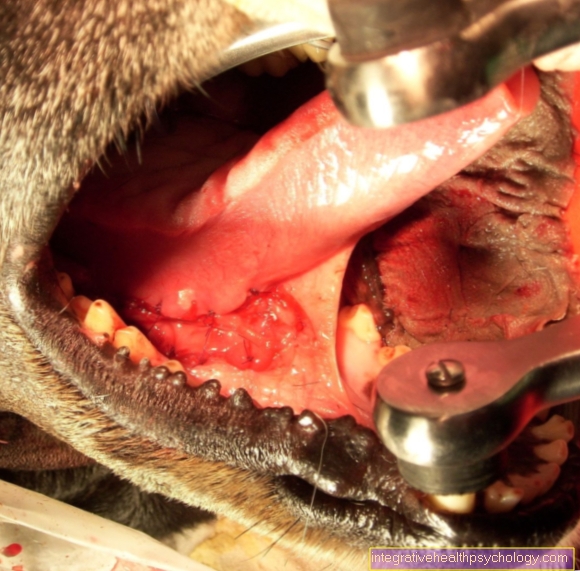Therapy of hay fever
Synonyms in a broader sense
Medical: Allergic rhinoconjunctivitis, allergic rhinitis, pollen allergy, pollinosis
definition
Hay fever is a disease of the upper respiratory tract that is caused by inhalation allergens and is more common in season and causes inflammation of the mucous membranes.
There are various approaches available to treat hay fever. Avoiding the triggering allergen (medical: allergen avoidance) can often lead to improvement. Hyposensitization for hay fever is also a therapeutic approach. Ultimately, various medications can also provide help.
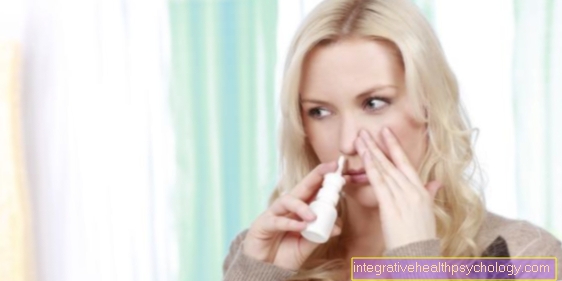
Which nasal sprays can help?
Every nasal spray that promises a decongestant effect on the mucous membrane is in principle suitable for treating hay fever. At least to alleviate the acute symptoms, commercially available nasal sprays can be used, as they are also used for colds. However, they do not have an allergy-specific effect, as they only have a purely vasoconstricting effect on the mucous membrane of the nose. They have no direct effect on the overreaction of the immune system.
For allergy sufferers, the use of specific nasal sprays is recommended because of the high potential for dependence on “normal” nasal sprays. These should contain an antihistamine or a mast cell stabilizer upon request from the pharmacy. Examples would be nasal sprays with azelastine (Vividrin ®) or cromoglicic acid. The otherwise undesirable side effect of fatigue with anthistamines is not to be expected here, as the application is purely local. However, the effect must be determined individually. Experience has shown that not everyone responds equally well to every preparation.
In the case of very severe or even chronic symptoms, the use of a cortisone-containing nasal spray can provide relief. However, these are only available in pharmacies with a prescription and should not be used permanently because of their side effect profile.
Learn more about:
- Nasal spray for an allergy
Desensitization / desensitization
The goal of desensitization is to weaken the excessive reaction of the body's own immune system to an actually harmless allergen from the environment by gradually getting used to it. The therapy is therefore comparable to an immune system training program. Gradually, an increasing dose of the allergen is usually administered in the form of a syringe or sublingually, signaling to the body that regular contact does not pose an acute threat to it. It is precisely the T lymphocytes of the immune system that are being trained.
With each new contact with the administered allergen, they trigger a milder chain of reactions until it ultimately resembles a reaction as in a normal healthy person.
However, the learning process takes months and requires regular breaks, so that desensitization often takes three years.
During the therapy, the same symptoms occur as with an allergic reaction. At the beginning of desensitization, this means that those affected will feel the same intensity of symptoms as they are used to during the hay fever season. Symptoms only decrease with ongoing therapy. It is not uncommon for those affected to find the therapy stressful. However, for moderate to severe forms of hay fever, it is the only way to successfully treat the allergy in the long term and avoid serious complications of an allergic reaction.
It is not uncommon for the health insurance to cover the costs for this if a doctor's letter is available.
Read more on the topic:
- Desensitization for hay fever
Which medications can help?
In general, we have to distinguish between two groups of drugs that can relieve hay fever:
- On the one hand, there are drugs that only relieve the symptoms of hay fever locally.
- on the other hand, there are drugs that address the cause of hay fever - the overreaction of the immune system
The first group mainly includes drugs in the form of nasal sprays, eye drops or inhalers. They alleviate the acute symptoms with itching, sneezing, burning eyes or impaired nasal breathing. The effect only relates to the mucous membrane that is directly wetted with the drug and leads to a swelling and possibly also to a locally reduced release of tissue hormones. So-called sympathomimetics are included as active ingredients. They have a vasoconstricting effect in the mucous membranes, which leads to a decongestion of swelling and in the lungs dilate the bronchi, which can enable easier breathing in acute cases. In principle, these drugs are the same as those used for a cold or in asthma therapy, but they do not work against the allergy itself.
Drugs that can be used locally and systemically, such as antihistamines and mast cell stabilizers, are allergy-specific. These two groups of active ingredients interrupt the ongoing chain of reactions in the event of an allergy. Antihistamines prevent the release of the tissue hormone histamine, which leads to an inflammatory reaction with the typical symptoms. Mast cell stabilizers prevent the release of histamine from the cells themselves. So their mechanism of action is similar. They are used in the form of nasal sprays, tablets, drops or juices. Cortisone should only be used for severe impairments. It has an immunosuppressive effect and therefore prevents the immune system's ability to eliminate the grass particles in the body that are recognized as foreign. The dangerous thing about this active ingredient, however, is that it can also prevent meaningful defense reactions of the immune system with increasing doses.
Read more about this:
- Medicines for hay fever
- Vividrin® acute nasal spray
Antihistamines
Antihistamines are preparations that are sometimes used to treat allergies. They achieve alleviation of the allergy-specific symptoms through their effect on the hormone histamine. In the event of an allergic reaction, cells of the immune system initiate an increased release of this hormone. The hormone itself induces an inflammatory reaction that is supposed to neutralize the allergen. Normally, this process is very useful to remove potentially dangerous foreign substances from the body or to render them harmless. Because only through the inflammatory reaction do the required defense cells get to their place of action.
In the case of an allergy, however, this reaction is extremely exaggerated. Antihistamines prevent the release of histamine by settling on the receptors for the hormone. The hormone is released by the body, but can no longer trigger an inflammatory reaction. This is explained by the fact that its binding site is already occupied. Well-known active ingredients in this group of preparations are cetirizine and loratidine. They are active ingredients of the second generation and thus advanced drugs with a lower spectrum of side effects.
The side effects can be diverse, with the majority of cases complaining of pronounced fatigue after taking antihistamines. For the sake of completeness, it must finally be mentioned that antihistamines, in addition to their allergy-specific effects, can also be used to treat nausea, as a sleeping aid or to counteract increased gastric acid production. However, these preparations contain other active ingredients and are useless if you have an allergy.
Eye drops with an active ingredient from the group of antihistamines are used for hay fever to alleviate the discomfort in the eyes. These include Livocab® eye drops. Read more about this at: Livocab® eye drops against hay fever
Lorano
Loratidine is another active ingredient in a second generation anthistamine. It is currently only available in tablet form under the trade name Lorano.
Loratidine, like cetirizine, promises relief from allergic symptoms without many side effects such as pronounced fatigue. It is therefore an alternative in the event of an intolerance to the active ingredient of cetirizine.
Read more about this drug at:
- Lorano
Cetirizine
Cetirizine is a well-known antihistamine that is mainly used for allergies such as hay fever.
It is also used for neurodermatitis, hives or itching. It is available in tablet form as well as drops or juice. This enables a wide range of uses and makes it easy to dose even with children. In fact, it is a second generation antihistamine. So it is a further developed preparation of this group of drugs. Its advantage is a lower spectrum of side effects. Above all, the tiredness after ingestion should occur here less.
Read more about this drug below:
- Cetirizine
Mast cell stabilizers
Mast cell stabilizers are mainly used for the prophylaxis of allergies. This is due to the fact that they only develop their full effectiveness after one to two weeks. If a sufficient level of the active ingredient is reached, you can reduce the symptoms of an allergic reaction. They achieve their effect by stabilizing mast cells, as their name suggests.
Mast cells are mainly found in tissue and contain a lot of histamine. If the immune system is activated as part of an allergy, the mast cells release their histamine and initiate an inflammatory reaction. This helps the immune cells to get to their target and neutralize the allergen. For mast cell stabilizers that are used against hay fever, this means that less histamine is released on contact with grasses in the area of the conjunctiva or nasal mucous membranes. Mast cell stabilizers can only be applied locally in the form of nasal sprays or eye drops. An application in capsule form is only effective against a food allergy, but not against hay fever. This limits the use of these preparations. However, a good effect could be observed in children.
Well-known active ingredients in this group of drugs are cromoglicic acid and nedocromil.
Cortisone injection / cortisone
Cortisone is a drug that suppresses the immune system. In precise terms, this means that it restricts the actual function of the immune system. In the context of an allergy, it prevents another overreaction of the immune system and leads to a reduction in symptoms. Depending on the intensity of the symptoms, it can be given locally in the form of a solution or systemically in the form of tablets or a syringe. The application in the form of a syringe works the fastest and is therefore most effective in extreme cases.
Read more under our topic:
- Cortisone injection
Leukotriene Receptor Antagonists
Leukotriene receptor antagonists are usually not a focus in the treatment of hay fever. Rather, they are used in asthma therapy. Its name already reveals its operating principle.
The active ingredients of this group of drugs are namely counterparts to leukotriene. Leukotrienes are inflammation mediators that lead to a narrowing of the bronchi, especially in the respiratory tract. Because active ingredients such as montelukast or zafirlukast settle on the body's own binding sites for the leukotriene, the inflammatory mediator can no longer cause any symptoms. In the treatment of hay fever, leukotriene receptor antagonists are only considered if, in addition to characteristic symptoms such as red eyes and a runny nose, breathing is difficult or even short of breath.
It is then used in the form of an inhaler to bring the active ingredient directly to its site of action - the constricted bronchi. So it is drugs that are used in severe forms of hay fever that include the form of allergic asthma. In itself, bronchial asthma is also an inflammation of the bronchi, which can be triggered by various factors. Atypical for a popularly known hay fever allergy, however, is the inflammation in the area of the bronchi. These symptoms then speak for a severe course.
Additional information on this topic can be found at:
- Medicines for asthma
Which home remedies can help?
Various herbal remedies are suitable as home remedies as part of a more conscious diet in addition to simple changes in everyday household. The motto is best to reduce the pollen or grass load to the minimum. It is therefore advisable for those affected to attach pollen protection in the form of bars to the windows before the hay fever season begins.
In addition, after contact with the allergens, clothing should be changed and, if necessary, increased personal hygiene in the form of washing hair or showering. This avoids renewed contact and the immune system is not re-sensitized.
If a blocked or runny nose is the biggest problem, it is advisable to inhale several times a day using a steam bath.It is sufficient to put hot water in a bowl and hold your head at an adequate distance under a towel over it. The water vapor washes the pollen from the mucous membrane and also wets the inflamed areas with moisture and protects them from further drying out.
If you want to influence the allergy through diet, you can try to strengthen your immune system with the targeted consumption of ginger. At first glance, this may sound like a paradox, as the immune system overreacts when you have a hay fever allergy. Nonetheless, the body needs its immune system to cure the inflammatory reaction that has been caused. In addition to ginger, many other types of fruit and vegetables are also suitable.
acupuncture
In acupuncture, small needles are placed in the skin and sometimes also in the muscles at certain points on the body in order to activate the body's own energy channels (meridians). This should activate self-healing powers. The effectiveness of acupuncture for treating hay fever has not been scientifically proven. However, if those affected feel, from their own experience, a significant alleviation of the symptoms through acupuncture, there is nothing to be said against this form of therapy from a medical point of view.
Also read:
- Forms of acupuncture
homeopathy
Homeopathy can provide relief for mild to moderate forms of hay fever. In the case of hay fever, therapy with homeopathic remedies is very symptom-specific. Exactly this means for the individual concerned to recognize his most debilitating symptom and then to select the remedy specifically. For red and swollen eyes, globules with euphrasia (eyebright) or Apis mellifica (honey bee) are suitable. If a runny nose is more in the foreground, the use of Luffa operculata globules is recommended. This cucurbit promises a clear relief from colds of any kind. The potency to be used should be the D12 potency.
The intake should be adjusted according to the severity of the symptoms. In the acute situation, a healthy adult should take about three globules every hour. With milder symptoms, it is sufficient to take about three globules three times a day. A pharmacist should be consulted when purchasing the product for other medical conditions or when taking it for children.
Schüssler salts
As for many other therapies from alternative medicine, there is also a lack of scientific evidence of the effectiveness of the Schüssler salts. The Schüssler salts are various highly diluted salts. The following remedies should primarily help against hay fever: Ferrum phosphoricum, sodium chloratum and Arsenicum jodatum. In addition, other salts can be taken to help with certain complaints.
eye drop
Eye drops are applied topically by being dropped into the conjunctival sac of the eye. In the case of hay fever, the use of suitable eye drops promises an improvement in dry, reddened eyes, some of which can also be sensitive to light. In order to achieve this effect, it is recommended to use allergy-specific preparations. Eye drops containing an antihistamine such as Vividrin® eye drops contain azelastine as an active ingredient. They therefore promise a locally reduced release of the hormone histamine, which causes the impairing symptoms such as reddened conjunctiva or itching of the eye.
Another alternative would be preparations with mast cell stabilizers such as eye drops with cromoglicic acid. They reduce the release of histamine and other signal substances from mast cells, so that they also reduce the inflammatory reaction.
The use of eye drops containing cortisone should be reserved for severe forms of hay fever. In addition, only a short application with cortisone should take place, since side effects are to be expected with long-term use even with local application. The dosage should be taken from the respective package insert.
Read more under our topic:
- Eye drops with cortisone
- Livocab® eye drops against hay fever
Can autologous blood therapy help?
Autologous blood therapy is a controversial method in alternative medicine for treating hay fever.
In particular, there are different ways in which autologous therapy is used. The blood that is taken from the patient is partially enriched with medication. Then the blood is returned to the body. This procedure is intended to promote the body's defenses and stimulate the immune system. Autologous blood therapy is also used for many other diseases. The treatments must be carried out once or twice a week over a period of several weeks.
Differential diagnoses
Differential diagnoses - with which other clinical pictures could allergic rhinoconjunctivitis (hay fever) be easily confused?
To be differentiated by excluding an underlying allergic cause (e.g. by the prick test, see above) is hyperreflective rhinopathy, which is also characterized by itching and sneezing problems, alternating runny nose and nasal congestion. The cause is an increased reaction of the nasal mucous membrane to environmental or mechanical stimuli such as smoke or cold.

.jpg)

